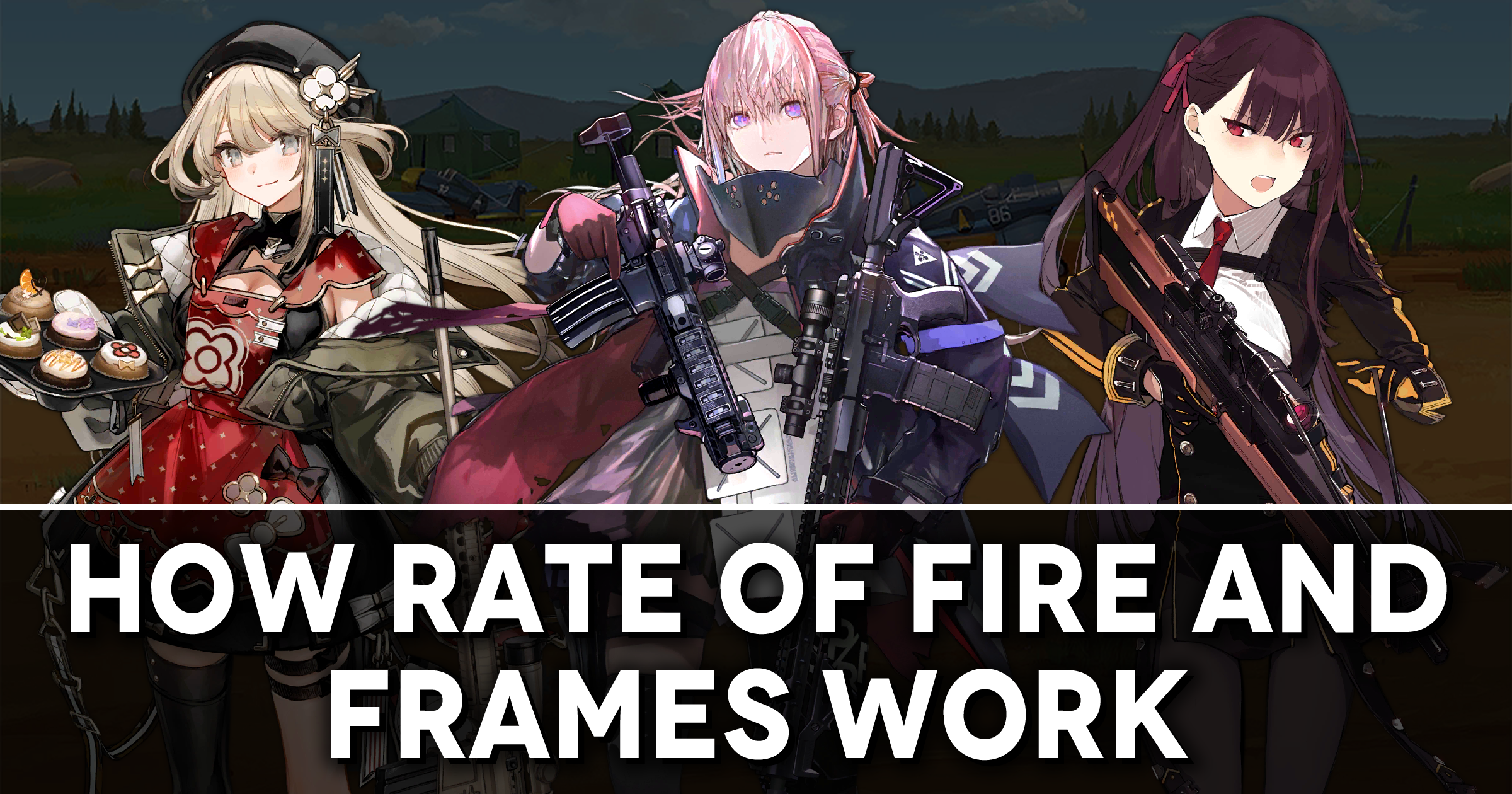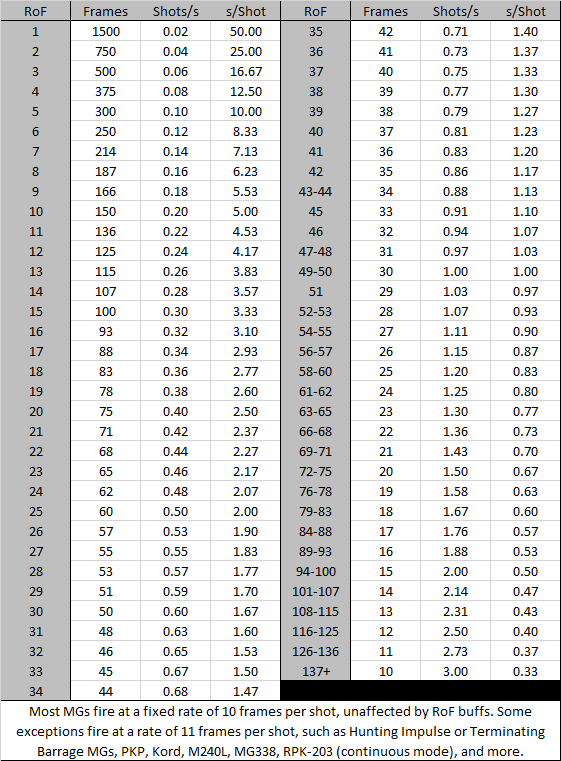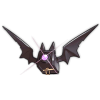Introduction
Rate of Fire (RoF) determines how fast a T-Doll can shoot. Each Doll has a different RoF cap (noted on their info page), with the highest cap being at 150; however, due to how frames work you will reach the maximum rate much sooner than this.
For a comprehensive list of all Dolls having higher than usual RoF caps, see this sheet by randomqwerty.
Frames & RoF
GFL’s combat runs at 30 frames per second (FPS), and the formula for the Dolls’ attack interval in frames is 1500/RoF, rounded down.
For example, a doll at 150 RoF would fire at 1500/150 = 10 frames per shot. Similarly, a doll at 149 RoF would fire at 1500/149 = 10.07 frames per shot, which rounds down to 10. Continuing this logic, you can see that you get no benefit from RoF above 137, as 1500/137 = 10.95, which rounds down to the same value of 10.
For a full table of all RoF values and their respective frames, see here:
Going for RoF Cap
You may then immediately jump to the next question… should you go for the RoF cap? The answer is usually no. RFs usually want some additional RoF from HG buffs because their base is so abysmally low, but going for too much RoF is simply going to overcap the RoF, giving you zero benefits.
As an example, WA2000 has a 75% RoF self-buff. Using her together with 1 RoF HG (pre-Mod Calico is used as an example here, 30% RoF tiles and 25% from Skill) will bring WA2000 to 110 RoF (39 * 1.3 * 1.75 * 1.25 = ~110). Adding another RoF buffer here (again, pre-Mod Calico for easy numbers) would bring this to 170 RoF (39 * 1.6 * 1.75 * 1.25 * 1.25 = ~170). As the last RoF breakpoint is 137 RoF, this is ~24% overcap, effectively losing the entire second RoF buffer’s Skill.
Also keep in mind that RoF really only matters for Dolls who mostly deal damage with their auto attacks. Dolls that deal damage through active Skills (for example Grenadiers) usually just want more Damage to increase the effectiveness of said Skills.
Animation Frames
A Doll’s animation for attacking and auto attacks also have durations, and sometimes these can be longer than their actual RoF stat might suggest. Usually this is an oversight and will be fixed when found. For example the Ringleader Agent has long animations, preventing her from going above 68 RoF.
Attack animations also have an influence on when Skills can be activated. If you were wondering why sometimes a Doll’s Skill is ready and she doesn’t immediately activate it, this is usually the reason. For more details see the [Advanced Kiting Doc doesn’t exist yet].
Reloading
MGs and SGs need to reload when they expend all their ammo, which has different formulas for each of them.
MGs
MGs fire at fixed intervals and their RoF instead influences their reload times. The formula for this is 4+200/RoF seconds. Note that the reduced reload time from wearing a Bipod is applied after multiplicative reductions (e.g., Lewis’ skill) but does not affect skills with fixed reload times (e.g., PK’s SPEQ). As a result, a Bipod significantly reduces reload times for the former (but may not always be optimal) and are not good for the latter.
SGs
While SGs also reload, their RoF stat is their actual rate of fire. The SG reload formula is instead 2.16 + ( 0.5 * base clip size ) seconds; SGs with a larger base clip size (not including extra ammo from Chokes) will therefore take longer to reload.
It is also important to note that there has been a lot of misinformation regarding SG reloads, and other conflicting info is incorrect.
















